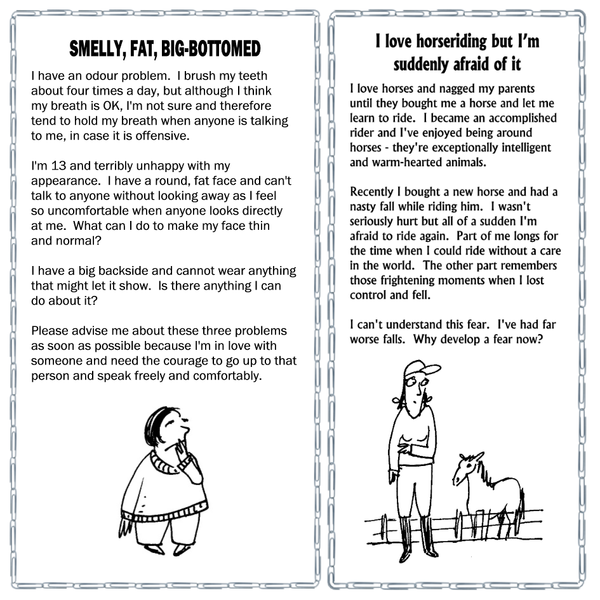| << Chapter < Page | Chapter >> Page > |

Use the given 16 point star to mind map your interests and your personality traits (the type of person you are).
Using these ideas, design an A4 sized mini-poster for your bedroom door, illustrating these special interests and who you are.
Only use words, pictures and coloured strips of paper, torn from magazines and pasted down. Try to fill every conceivable opening or space.
Laminate your project before displaying it in class and at home.
| LO 4.2 | LO 4.4.1 | LO 4.4.8 | ||||
| CHECKLIST | | |||||
|
||||||
|
||||||
|
||||||
|
||||||
|
||||||
|
||||||
|



In your groups, do the following –
Brainstorm the problems teenagers experience today.
Still in groups, list these problems in order of importance or severity.
How can these problems be avoided?
What is the best way of handling any such problem?
Would you allow someone to help you with a particular problem?
Report to your peers. How do your ideas compare to theirs?
| LO 5.3.1 | LO 5.3.4 | LO 5.3.5 |

Read the letters printed below. Select one, think carefully about the contents and answer it as if you are Sister Mildred, Dr Dee or Dr Phil, giving the writer good and sound advice.


SELF-ASSESSMENT
| I read the letter/s carefully and selected a specific problem to discuss … | yes | no |
| I thought carefully about the problem described in the letter and discussed possible advice – in a mature way – with my group peers … | yes | no |
| I displayed respect for other participants’ opinions by allowing them turns to speak without interruption and without criticizing their ideas … | yes | no |
| (decide on another criteria and write it in this block) | yes | no |
| LO 5.1.1 | |
| LO 5.1.4 | |
| LO 5.1.5 |
| LO 4 |
| WRITING The learner is able to write different kinds of factual and imaginative texts for a wide range of purposes. |
| We know this when the learner: |
| 4.1 writes a selected range of imaginative texts: |
| 4.1.2 to explore the creative and playful use of language by means of narrative and descriptive compositions, diaries, friendly letters, dialogues, poems, cartoons, limericks and songs; |
| 4.2 produces a selected range of factual written and multi-modal texts (texts using print and images) for various purposes, using visual and design elements where appropriate by means of eyewitness accounts, posters, advertisements, book reviews, recipes, and game instructions; |
| 4.4 uses the writing process with assistance and collaboratively to generate texts: |
| 4.4.1 selects and explores topics through brainstorming, using mind maps and lists; |
| 4.4.4 organises ideas coherently in simple, logical order to produce first drafts; |
| 4.4.5 reflects on drafts, considering purpose, audience, language usage and logical organisation, and revises appropriately; |
| 4.4.8 publishes final product, paying attention to presentation and basic elements of design. |
| LO 5 |
| THINKING AND REASONING The learner is able to use language to think and reason, and access, process and use information for learning. |
| We know this when the learner: |
| 5.1 uses language to think and reason: |
| 5.1.1 infers and deduces meaning, and explains the intentions of the author by interpreting written, visual and aural texts across the curriculum; |
| 5.1.4 expresses and develops a clear personal viewpoint; |
| 5.1.5 supports an argument with various kinds of evidence; |
| 5.1.7 uses appropriate language structures to express complex thought; |
| 5.3 processes information: |
| 5.3.1 records information in an accessible format (e.g. lists, mind maps, notes, summaries); |
| 5.3.3 changes information from one format into another (e.g. mind map into paragraph, list into summary); |
| 5.3.4 reflects critically by sharing and challenging ideas; |
| 5.3.5 compares different points of view, and identifies differences and similarities. |

Notification Switch
Would you like to follow the 'English home language grade 7' conversation and receive update notifications?